Over the past week, the Islamic State has launched a series of attacks against Iraqi troops and allied Iranian-backed Shiite militias near the key central city of Samarra. The attacks include an operation that resulted in a defeat of the Shiite Badr Brigade militia, and a series of suicide bombings that were executed by foreign jihadists from France, Saudi Arabia, and Syria.
In the town of Mukayshfah, which sits on the main highway between Samarra and the Islamic State-controlled city of Tikrit, the jihadist group clashed with the Badr Brigade, killed at least 11 fighters, and captured weapons, ammunition, and pickup trucks after overrunning a unit. The Salahaddin division of the Islamic State released photographs of the fighting in Mukayshfah on its social media accounts yesterday.
The photos, some of which are extremely graphic, show Islamic State fighters firing on Badr Brigade positions, its fighters patrolling the streets, the corpses of Badr militiamen, and weapons, vehicles, and other items captured during the fighting. Several of the photos show Badr militia flags and vehicles emblazoned with Badr’s logo.
The current status of Mukayshfah is unclear. In the photos, Islamic State fighters appear to control the town, but they may have withdrawn after the attack.

Also yesterday, the Islamic State released images of three suicide bombers from France, Saudi Arabia, and Syria who conducted attacks in Huweish, Mukayshfah, and Al Buduour, respectively. The three towns are all located near Samarra, along the main highway to Tikrit.
“The French fighter, Abu Anas al Firansi, detonated an explosives-laden vehicle against Shiite militia elements in Huweish, while Abu Nayef, the Saudi, hit a similar target in al-Mukayshfah, and Abu Omar targeted Iraqi soldiers in the area of Al Buduour,” the Islamic State said, according to the SITE Intelligence Group. The exact date and results of the attacks have not been disclosed. The Islamic State has featured attacks by foreign fighters as part of an effort to attract jihadists from outside Iraq and Syria to join its ranks, as well as to promote the organization as a global jihadist group. [See Threat Matrix report, German, Saudi, and Turkish Islamic State fighters launch complex suicide attack.]
The Islamic State also launched a suicide assault yesterday in Dijla, a town just south of Mukayshfah which is also situated on the road to Tikrit, and killed 12 Shiite militiamen in the operation.
“The militia fighters were killed when Islamic State militants commandeered an armored Humvee, rigged it with explosives and drove it into a school where the fighters were based near Dijla district, 20 km (15 miles) south of the city of Samarra,” Reuters reported. “They followed up with mortar and machine gun fire, a source at the Samarra Operations Command said, and clashes continued.”
The Islamic State has stepped up its attacks in Samarra, despite suffering a setback farther north after it lost the city of Baiji during a joint Iraqi military and Shiite militia assault last month.
Samarra is strategic terrain for both the Islamic State and the Iraqi government. The Islamic State attempted to seize Samarra just prior to launching its June offensive that saw the group seize most of Ninewa province, including Mosul, Iraq’s second largest city, as well as Salahaddin province. [See LWJ reports, ISIS takes control of areas in central Iraqi city and ISIS’ advance halted at Samarra.]
The Islamic State seeks to control Samarra and towns and cites to its south in order to secure the northern Baghdad belt. Jihadist control of this area would make it difficult for Iraqi forces to resupply and reinforce military units north of the city. Additionally, the Islamic State would use this area to disrupt security in Baghdad.
The Iraqi government has allowed Shiite militias, including the Badr Brigade, Hezbollah Brigade, Asaib al Haq (League of the Righteous), and Muqtada al Sadr’s Promised Day Brigade, all of which are supported by Iran’s Qods Force, to reinforce beleaguered and demoralized Iraqi forces in Samarra. These militias have remained on the front line and have secured cities and towns, many of which are predominantly Sunni communities, along the road from Samarra to Baghdad.
Qasem Soleimani, the commander of Iran’s Qods Force, the special operations branch of the Islamic Revolutionary Guards Corps, has been spotted numerous times in Samarra directing military operations there. He has been photographed alongside Shiite militiamen in Samarra as recently as last month. The Qods Force commander has also been spotted on other key fronts as Shiite militias assume a larger role in fighting the Islamic State.
The Shiite militias appear to be girding for a major battle in and around the city. Hadi al Ameri, the leader of the Badr Brigade who is close to Soleimani, is traveling to Samarra to aid in organizing the city’s defense. He is said to be accompanying an Iraqi armored brigade from the 11th Division.
Muqtada al Sadr, the leader of the Promised Day Brigade, which is the successor of the Mahdi Army, released a statement to his forces telling them to be “prepared for combat within the next 48 hours” in Samarra.
Photographs from the Islamic State in Mukayshfah
An Islamic State fighter stands next to a Badr Brigade Toyota Hilux captured during the fighting:
Vehicles seized during the fighting:
Another Badr Brigade vehicle seized in Mukayshfah:
Islamic State fighters patrol the streets of Mukayshfah:

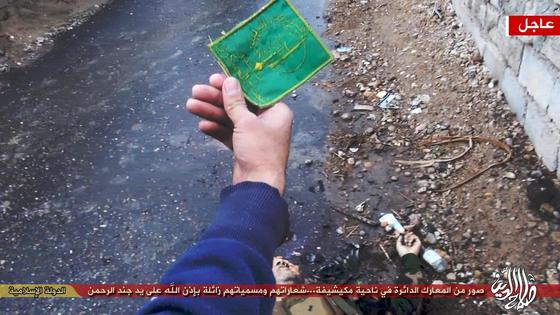
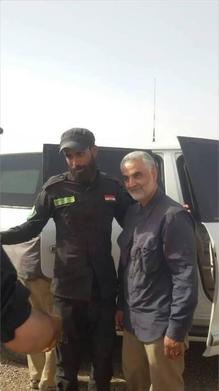
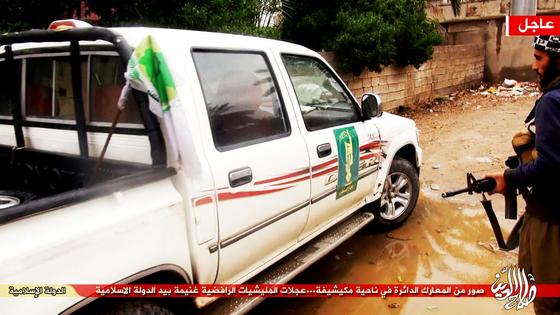
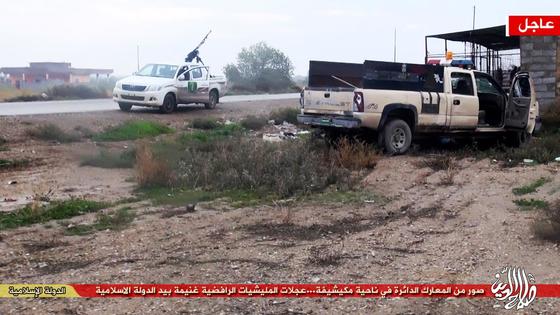
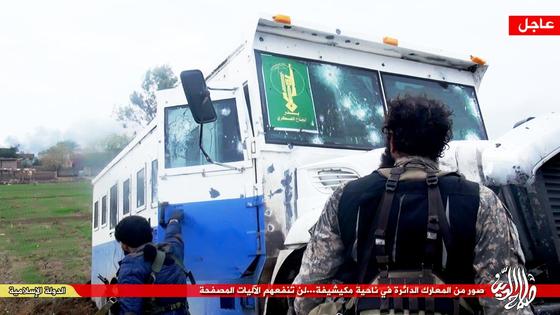
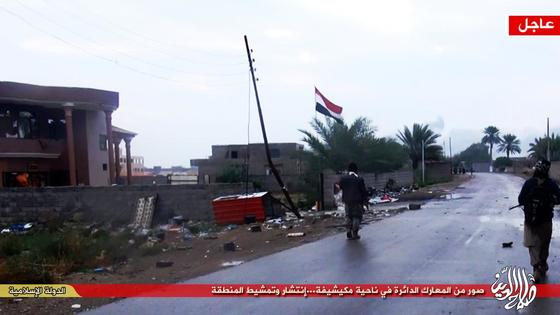
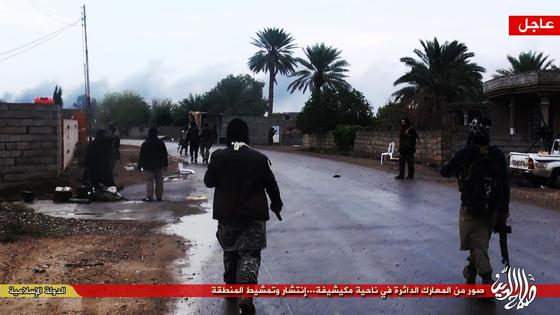







2 Comments
IS never ceases to amaze. I think that they have a total force of 100-250k total fighters. They rule a medieval empire with millions of devout and destitute people. I do not think that recruitment is tough and foreigners keep slipping in. With Shiites and Sunni tribes declaring a take no prisoners policy, I see IS doing same.
About time al Sadr actually did something .